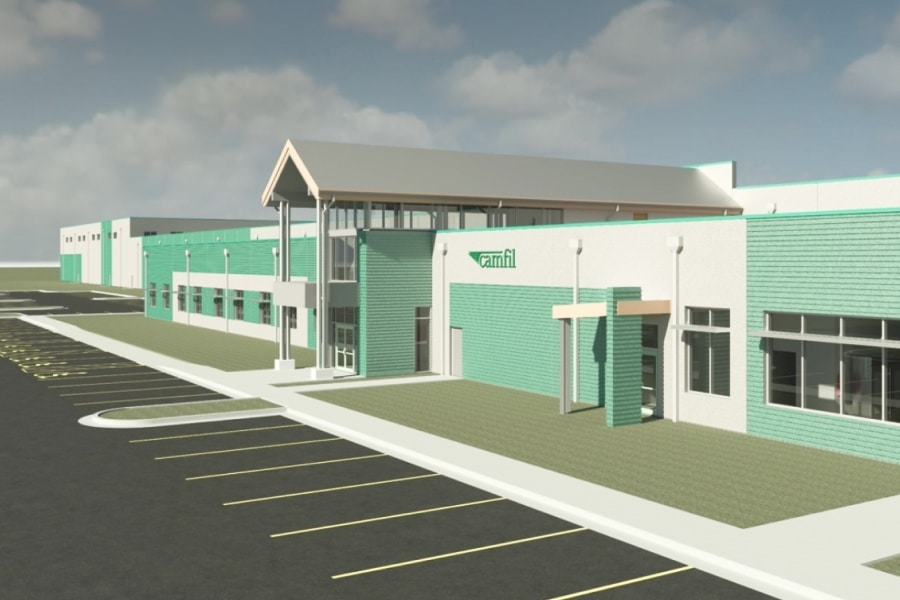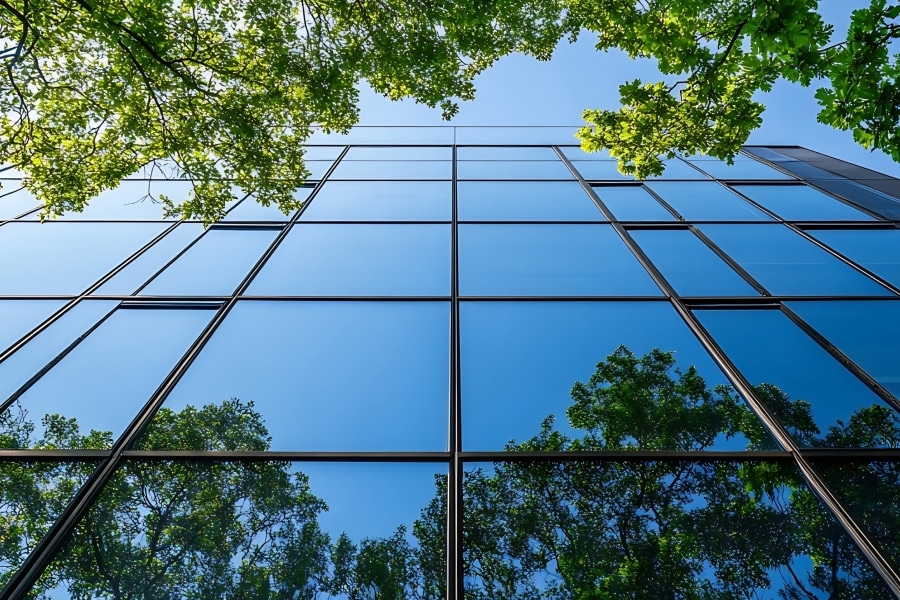Illustration by Wenting Li
For all of human history, people have built spaces that reflect their physical and psychological needs.
The Japanese innovated the use of sliding paper walls as a result of their cultural desire for malleable, responsive spaces. Paris’ distinct limestone facades were developed to create an aesthetically coherent reflection of Napoleon’s desire for a unified France.
The spaces where we live and work can be seen as an extension of our cultural values, a reflection of what we consider the most important aspects of our shared humanity.
But what if this relationship went both ways? What if, as we set out to shape our environments, our environments were shaping us right back?
This is the concept behind a fascinating new non-fiction book by Emily Anthes, The Great Indoors: The Surprising Science of How Buildings Shape Our Behavior, Health, and Happiness. As humans have let their cultural and psychological needs shape the spaces we exist in, Anthes writes in the book, those spaces have indeed been shaping us right back.
Workspace and the impact of the open-plan office
The COVID-19 pandemic, according to Anthes, has caused designers to re-examine one of the most maligned features of the contemporary workspace: the ubiquitous open-plan office.
First becoming common in the 1960s, with the revolutionary designs of the Herman Miller Research Corp., the open-plan office was intended to streamline collaboration between co-workers and create a more democratic structure within the workspace. Instead, it can actually make communication more difficult, Anthes writes in the book.
“When open offices are discussed, you often hear people pay lip service to the fact that you sacrifice privacy, but it’s a lot better for teamwork and collaboration,” Anthes said in an interview with the Built Blog. “But that does not seem to be the case. There’s a study I discuss in the book where they put electronic badges on office workers before and after an office overhaul, where they moved from private offices to open offices. And they actually found that their face-to-face communication plummeted after moving into open offices.”
Transitioning from a private workspace to an open-plan office caused workers to move much of their communication online. “Whether it was because there was no privacy or people were worried about disturbing their co-workers, it had the opposite effect than the company had hoped,” Anthes said.
Open offices can also cause a leveling effect, where all workers are exposed to the same conditions. But Anthes found that this democratic quality isn’t necessarily a good thing. Breathing in recirculated air in shared open office spaces with poor ventilation can have a measurable impact on worker performance—even when there isn’t a pandemic.
“It turns out that even moderate buildup of CO2 indoors, at levels that commonly accumulate in a classroom or an office, can be enough to impair our cognitive performance and muddle our thinking,” Anthes said. “This is especially true in spaces where there are multiple people, like a conference room that doesn’t have good ventilation. If you have a dozen people in there for an hour, the CO2 can really build up. There is a study that showed that if you boost the ventilation rate and you bring in more outdoor air that people start performing better on cognitive tests.”
Now that some people are returning to work in a socially distanced capacity, Anthes said it’s more important than ever to be mindful of the way air circulates within the spaces where we spend our professional lives. This is both to protect workers from the virus and to maintain peak cognitive performance.
“Open offices aren’t great from an infectious disease perspective,” Anthes said. “There have been studies showing that people who work in open offices take more sick days than people who don’t.” Anthes hopes that the COVID-19 pandemic will cause companies to reconsider their approach to office design. “Open offices are bad for everyone except for the bean counters for the company,” Anthes said, referencing a firm’s accounting department.
Impacts of home space
Most of us can’t control the design of the spaces we work in, but what about the design of our homes?
With more people working from home nowadays, this space has become even more central in our lives, and Anthes said that it’s important to be intentional in the way we design and use our domestic space.
“My no. 1 recommendation is finding ways to bring nature into your home,” Anthes said. “Nature has an unbelievable array of benefits. Almost anything you could think of an environment wanting to achieve, it can do. It can reduce stress, anxiety, pain; boost focus, concentration and the immune system.”
Creating a domestic space that feels like a part of the natural world is one of the most critical indicators for occupant health and well-being. “Studies show that just having a view out the window of nature can be really helpful,” Anthes said, “but if you’re not so lucky, houseplants can have some of the same effects, and so can displaying photographs of natural landscapes, or even playing natural sounds. Any way that people can bring nature into their space has a lot of benefits.”
Anthes also recommends being mindful of the quality and color of light you expose yourself to throughout the day. “Cool blue light seems to be good for multitasking and task switching,” Anthes said. “And warmer light has been shown to be better for enhancing creativity. There’s no one environmental setting that’s good for everything—it all depends on the kind of space you’re creating and the kind of tasks people are doing in it.”
Creating malleable spaces for better quality of life
Ultimately, Anthes said that the most important quality to keep in mind when designing a space—whether it’s for a home office or a large commercial construction project—is adaptability.
“Embracing the principle of choice and control is really the best solution to the problems of how to live in a built space,” Anthes said. “Designers should work to create different microenvironments—maybe some couches and dim lighting in a darker corner of an office, but then a bright conference room or some open plan desks, and to allow workers to really know their own needs.”
This way, workers and other users of a shared space will be able to more easily adapt it to their needs. “It’s hard to build a space that works for everyone,” Anthes said. “The more you can create different microenvironments and let people choose, the better.”












